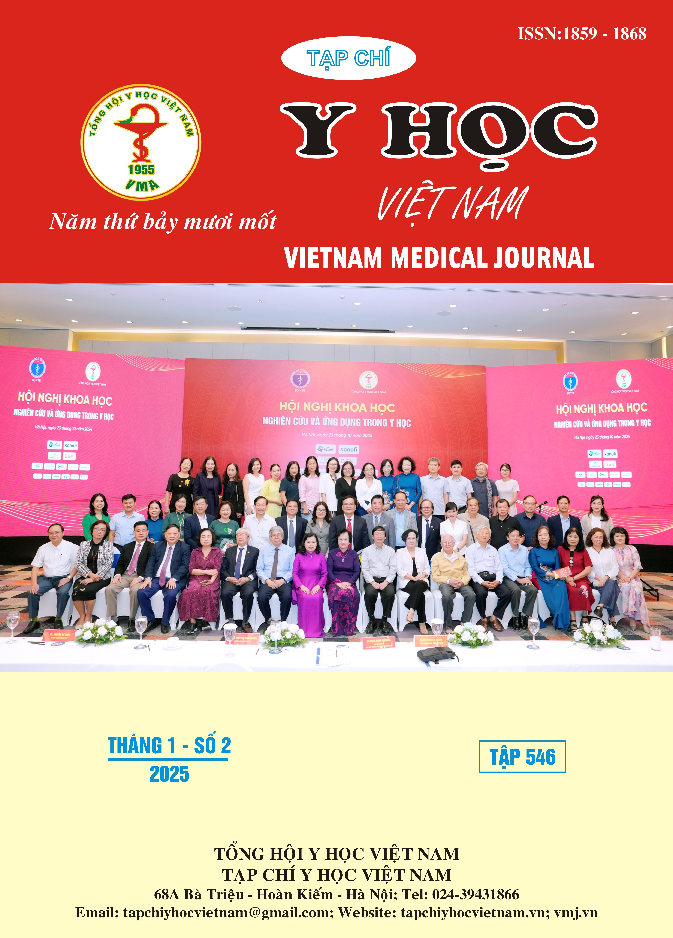EVALUATION IMMUNOHISTOCHEMICAL EXPRESSION IN INVASIVE LOBULAR CARCINOMA OF THE BREAST
Main Article Content
Abstract
Objective: To improve the quality of diagnosis, treatment, and prognosis for breast cancer in general and invasive lobular carcinoma (ILC) in particular. Subjects and Methods: We conducted a retrospective descriptive study on 167 ILC patients who underwent a mastectomy at K Hospital from January 2019 to July 2023. Results: ER-positive, PR-positive and HER2-positive rate were 88,0%, 79,0%, 12%, respectively; Ki67 more than 20% made up 45,5%. Luminal A and luminal B with HER2(-) subtypes accounted for the highest rate with 40,1% and 41,9% respectively. The Luminal B with HER2(+), HER2-enriched, Tripple negative breast cancer subtype accounted for a small percentage, there were 10 cases and equivalent to 6% for each of these 3 subtypes. Conclusion: Luminal A and luminal B with HER2(-) were the two most common subtypes in ILC with the rate of 40,1% and 41,9% respectively. The characteristics of high percentage of hormone receptors positive and low percentage of HER2 positive might account for better outcome of ILC breast cancer compared to NST subtype of breast cancer.
Article Details
Keywords
breast cancer, immunohistochemical, invasive lobular carcinoma of the breast
References
2. Allred DC, Harvey JM, Berardo M. Prognostic and predictive factors in breast cancer by immunohistochemical analysis. Mod Pathol. Feb 1998;11(2):155-68.
3. Wolff AC, Hammond ME, Hicks DG, et al. Recommendations for human epidermal growth factor receptor 2 testing in breast cancer: American Society of Clinical Oncology/College of American Pathologists clinical practice guideline update. Journal of clinical oncology : official journal of the American Society of Clinical Oncology. Nov 1 2013;31(31):3997-4013. doi:10.1200/jco.2013.50.9984
4. Chen Z, Yang J, Li S, et al. Invasive lobular carcinoma of the breast: A special histological típe compared with invasive ductal carcinoma. PloS one. 2017;12(9):e0182397. doi:10.1371/journal. pone.018239782.
5. Hammond ME, Hayes DF, Dowsett M, et al. American Society of Clinical Oncology/College of American Pathologists guideline recommendations for immunohistochemical testing of estrogen and progesterone receptors in breast cancer (unabridged version). Archives of pathology & laboratory medicine. Jul 2010;134(7):e48-72. doi:10.5858/134.7.e48
6. Arps DP, Healy P, Zhao L, Kleer CG, Pang JC. Invasive ductal carcinoma with lobular features: a comparison study to invasive ductal and invasive lobular carcinomas of the breast. Breast Cancer Res Treat. Apr 2013;138(3):719-26. doi:10.1007/s10549-013-2493-2
7. Hoff ER, Tubbs RR, Myles JL, Procop GW. HER2/neu amplification in breast cancer: stratification by tumor típe and grade. American journal of clinical pathology. Jun 2002;117(6): 916-21. doi:10.1309/4ntu-n6k4-f8jf-ewrx
8. Da Ros L, Moretti A, Querzoli P, et al. HER2-Positive Lobular Versus Ductal Carcinoma of the Breast: Pattern of First Recurrence and Molecular Insights. Clinical breast cancer. Oct 2018;18(5): e1133-e1139. doi:10.1016/j.clbc.2018.04.006.


